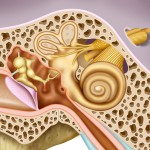Like most medically-trained people (and hopefully many of the rest of us), I've been highly concerned about the rise of drug-resistant microorganisms, bacteria that can't be treated with our standard antibiotics. A recent article in The Wall Street Journal with the intriguing title "Antibiotics of the Future" offered considerable hope, but let look at some background on the subject first.
The WSJ article said that two million patients each year in the United States develop infections that doctors can't combat with our normal antibiotics; earlier in the year, the CDC in a report titled "Antibiotic Resistance Threats in the United States 2013" estimated that at least 23,000 of them die. They divide the microorganisms, all bacteria except for Candida (a fungus), into three groups: those whose threat levels are considered urgent, serious or concerning. The three in the urgent category include Clostridium difficile, which causes severe, life-threatening diarrhea, often in patients who have been hospitalized and are already on antibiotics, and leads to a quarter-million infections, 14,000 deaths and a billion dollars in medical expenses yearly. Then there are the carbapenem-resistant Enterobacteriaceae, abbreviated as CRE (the carbapenems are powerful antibiotics considered the "drugs of last resort," used when all other old and modern antimicrobials fail or are thought to be likely to fail; Eneterobacteriaceae are bacteria that are part of the normal gut flora.)
CRE infections most often happen in patients getting treatment for other serious conditions. They may be on a respirator, have a long-term catheter in their bladder or have been on other antibiotics. One estimate says there are 9,000 CRE infections a year and they cause at least 600 deaths. Patients in intensive care units not infrequently have IV catheters placed in large veins in the neck, chest or groin to allow hospital personnel to give medications and draw blood sample for a prolonged period of time. If these get infected they can cause a bloodstream infection (sepsis is the medical term). About half of all hospital patients who get CRE that goes on to cause a bloodstream infection die.
The third infectious urgent threat level is the bacteria, Neisseria gonorrhoeae, that causes the STD gonorrhea. The CDC estimates more than 800,000 cases occur yearly in the United States and 30% of these are resistant to some antibiotic, but almost all can be treated, at this time, with a two-drug cocktail. Gonorrhea causes severe reproductive system complications and the CDC says it "disproportionally affects sexual, racial and ethnic minorities."
Then there is MRSA, methicillin-resistant Staphylococcus aureus. This bug is classified as serious, not urgent, yet there are roughly 80,000 severe MRSA cases a year and over 11,000 of these patients die. Most major MRSA cases are seen in healthcare setting among patients with weakened immune systems (e.g., those on hemodialysis or receiving cancer therapy) but less serious MRSA can case problems in otherwise healthy people, including athletes who share towels or razors, children in day-care and members of the military in cramped quarters. Some of these infections, usually of the skin, can become severe and life-threatening.
The CDC piece, except for Candida, excludes non-bacterial diseases, but I received a reader comment a while back from a person whose website (Mphonline.org) has a post on Deadly Viruses. Like parasitic diseases, e.g., malaria, viruses through the ages have killed simply enormous numbers of people. Now we're facing a future when bacterial illnesses could overtake their status as the prime infectious threats to mankind.
An article in the December 23, 2013 online version of the New York Times described an increased death rate among dolphins, with many dying of viral disease. A number of them also showed evidence of antibiotic resistant bacteria, presumably from environmental contamination. Dolphins have been termed the modern equivalent of the canary in the coal mine, a biological early warning system analogous to the times when miners used to carry caged canaries while at work; if there was any methane or carbon monoxide in the mine, the canary would die before the levels of the gas reached those hazardous to humans.
The New England Journal of Medicine in January, 2013, published an article titled "The Future of Antibiotics and Resistance." The lead author, Dr. Brad Spelberg, works where I did my research fellowship. He and two colleagues mention that antibiotic-resistant bacteria are considered, in a major yearly publication by the World Economic Forum (WEF), to be a leading risk to human health.
The World Economic Forum's (WEF) 2013 publication on Global Risks analyzed fifty possibilities (e.g., economic disparity, religious fanaticism, rising greenhouse gas emissions, terrorism, water supply crises), examining their likelihood over the next decade, the impact if they actually happen and how interconnected they were to each other. It used those to generate analyses of three major risk cases: one was on the threats to economic/environmental systems, a second on so-called 'digital wildfires" from misinformation, and The Dangers of Hubris on Human Health, devoted to antibiotic-resistant bacteria.
In a study done in Europe, 50% of French patients experiencing a flu-like syndrome (FLS) expected their physician to prescribe an antibiotic; FLS may be caused by influenza virus or other viruses and antibiotics are not of any use against these viral diseases. The WEF piece mentioned an article reporting 98% of Chinese children seen in a Beijing pediatric hospital for common colds were given antibiotics.
Huge quantities of antibiotics are being used for animals as well. Animals being raised for their meat are often given antibiotics as growth promoters. A 1950 article in Science News announced results from Lederle Laboratories that lacing the hog feed with trace amounts of an antibiotic could increase the yield of meat by a half. Then in 1977 the FDA sent out a notice that it would withdraw approval of non-medical use of penicillin and tetracyclines, but no hearings on the subject followed that non-binding pronouncement.
A Federal District judge finally ordered those FDA hearings in 2012, but an article online less than two weeks ago said only suggestions to the animal-growing industry have resulted. In 2009, more than 3,000,000 kilograms of antibiotics were given to US patients; in 2010, 13,000,000 kilograms were used for animals.
Back to the Wall Street Journal article: it mentions four new approaches to treatment of these deadly bugs. The two I found most intriguing were research to befuddle the bacteria by working against the signaling chemicals they use to become infectious and using silver to increase the ease with which antibiotics enter the microbes.
There's a way to go before these concepts are translated into bedside medicine, but there is more than a glimmer of hope on the horizon.






